U.S. Army Corps of Engineers (USACE) have put out a “tentative timeline” for getting commercial shipping in and out of Baltimore by the end of the month, but a full reopening will likely take twice as long.
A “limited access channel” into the Port of Baltimore will be opened by the end of this month, allowing one-way traffic in and out of the important harbour. The assessment comes in a statement from the U.S. Army Corps of Engineers (USACE), with Lieutenant General Scott A. Spellmon saying “exhaustive” surveys and analysis of the remains of the Baltimore bridge means the Corps has “developed a better understanding of the immense and complex work that lies ahead”.
Calling the route to reopening the harbour a “tentative timeline for the restoration of safe navigation in and out of the Port of Baltimore”, the planned “limited access channel” intended to open at the end of April will be 280 feet wide and 35 feet deep.
This development means larger ships than the present emergency access channel that opened at the weekend could enter and leave the harbour will be limited in both quantity and size, but it does mean a limited reopening of the port and relief to the Baltimore economy. At 280 feet wide traffic will necessarily be one-way, given even medium-size container ships like the MV DALI that brought down the Baltimore bridge last week have a beam (width) of 160 feet.
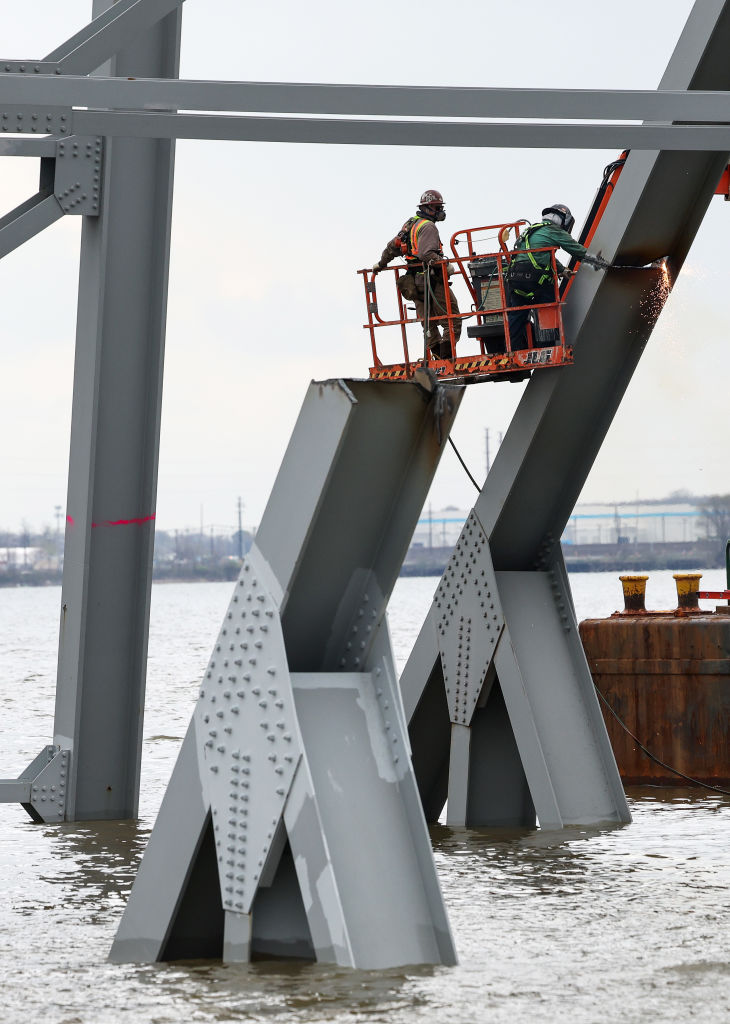
BALTIMORE, MARYLAND – APRIL 04: Workers cut pieces of the Francis Scott Key Bridge after it collapsed when the cargo ship Dali crashed into it, April 04, 2024 in Baltimore, Maryland. The bridge collapsed after being struck by the 984-foot ship at 1:30AM on March 26. Officials opened a temporary channel on Monday, allowing some essential vessels to bypass the wreckage while moving in and out of one of the nation’s busiest commercial shipping hubs. Two members of a road repair crew working on the bridge at the time of the collision are dead and four more remain missing. (Photo by Kevin Dietsch/Getty Images)
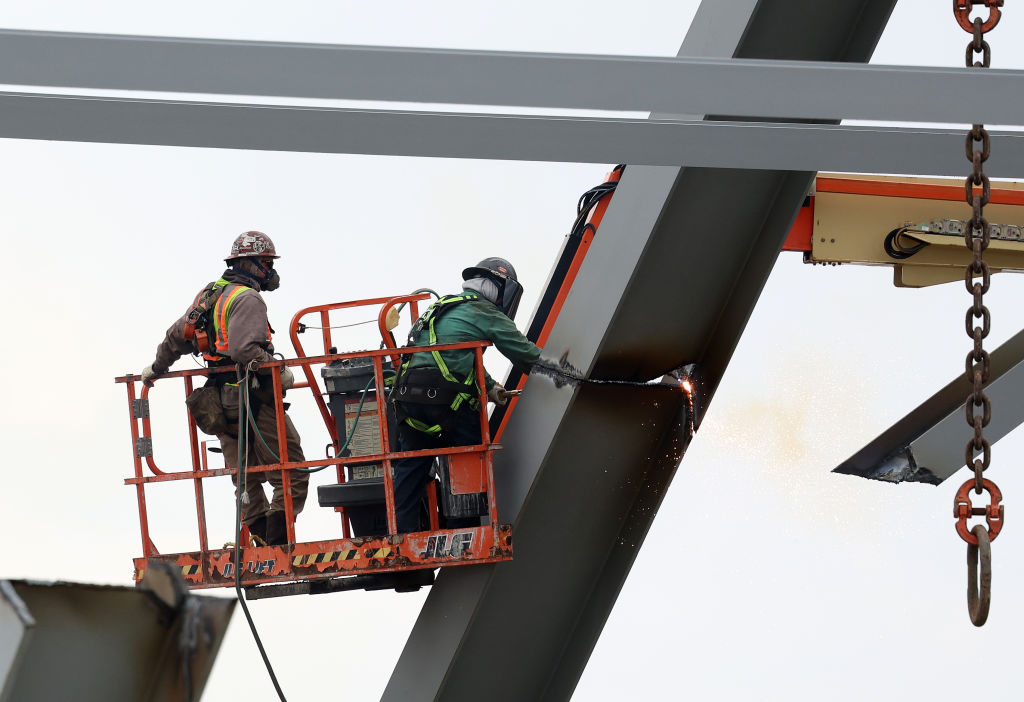
BALTIMORE, MARYLAND – APRIL 04: Workers cut pieces of the Francis Scott Key Bridge after it collapsed when the cargo ship Dali crashed into it, April 04, 2024 in Baltimore, Maryland. The bridge collapsed after being struck by the 984-foot ship at 1:30AM on March 26. Officials opened a temporary channel on Monday, allowing some essential vessels to bypass the wreckage while moving in and out of one of the nation’s busiest commercial shipping hubs. Two members of a road repair crew working on the bridge at the time of the collision are dead and four more remain missing. (Photo by Kevin Dietsch/Getty Images)
“Mass Casualty Event”: 1.6 Mile Baltimore Bridge Collapses After Being Struck by Cargo Ship pic.twitter.com/0Y5pw11vNH
— Breitbart News (@BreitbartNews) March 26, 2024
As expressed by USACE: “engineers have determined a tentative timeline for the restoration for safe navigation in and out of the Port of Baltimore… This channel would support one-way traffic in and out of the Port of Baltimore for barge container service and some roll on/roll off vessels that move automobiles and farm equipment to and from the port.”
In other words, the large ships that in normal times serve the port still won’t be able to get in and out.
Per the Army Engineers, this will have to wait until the federal channel reopens, which they estimate will occur by the end of May. Yet the work ahead to realise this goal of completely clearing the channel — never mind floating off and removing the MV Dali which is precariously pinned by the remains of the bridge just west of the dredged federal navigation channel — is enormous.
Cutting the steel of the bridge above water level is comparatively straightforward, but of course much of it is below and embedded in mud and the suddenly shifting weight of a large twisted structure in low-visibility river water could be potentially lethal to divers.
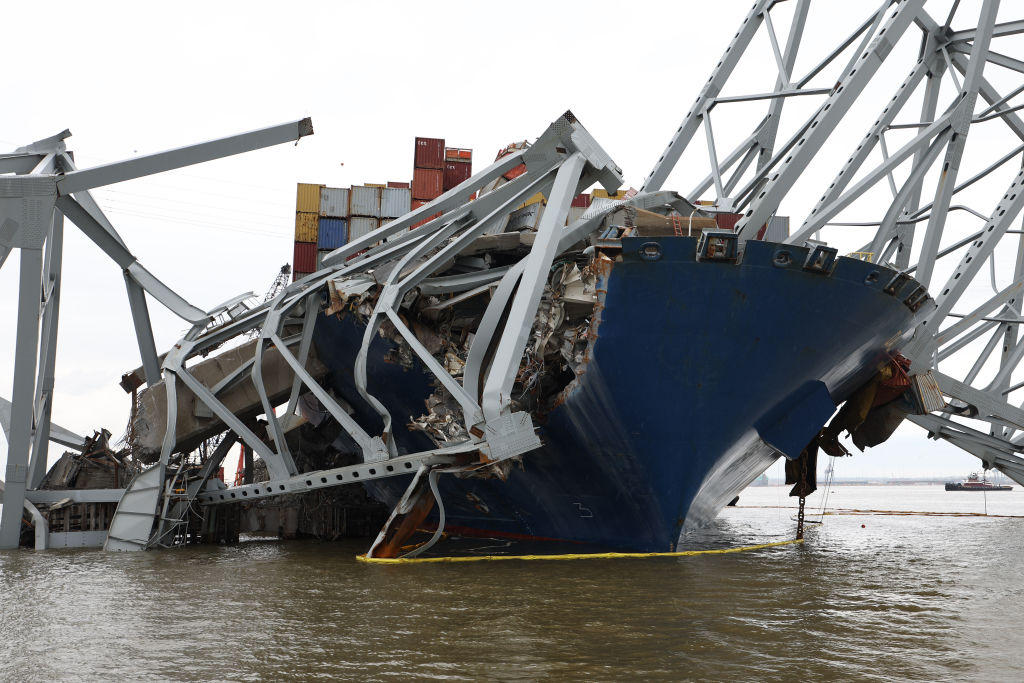
BALTIMORE, MARYLAND – APRIL 04: The wreckage of the cargo ship Dali is seen after it collided with the Francis Scott Key Bridge on April 04, 2024 in Baltimore, Maryland. The bridge collapsed after being struck by the 984-foot cargo ship Dali at 1:30AM on March 26. Officials opened a temporary channel on Monday, allowing some essential vessels to bypass the wreckage while moving in and out of one of the nation’s busiest commercial shipping hubs. Two members of a road repair crew working on the bridge at the time of the collision are dead and four more remain missing. (Photo by Kevin Dietsch/Getty Images)
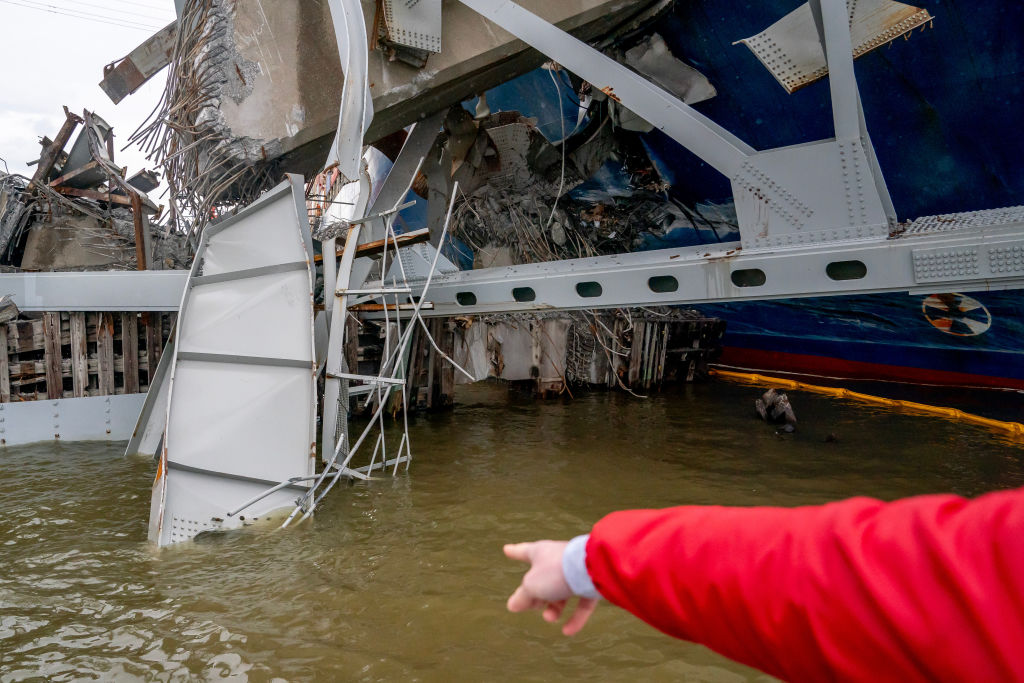
A member of the US Army Corps of Engineers gestures toward the Dali container vessel after it struck the Francis Scott Key Bridge that collapsed into the Patapsco River in Baltimore, Maryland, US, on Thursday, April 4, 2024. Federal officials are poised to release preliminary findings of their investigation into the Baltimore bridge collapse that killed six and shut down Baltimore’s port last week. Photographer: Nathan Howard/Bloomberg via Getty Images
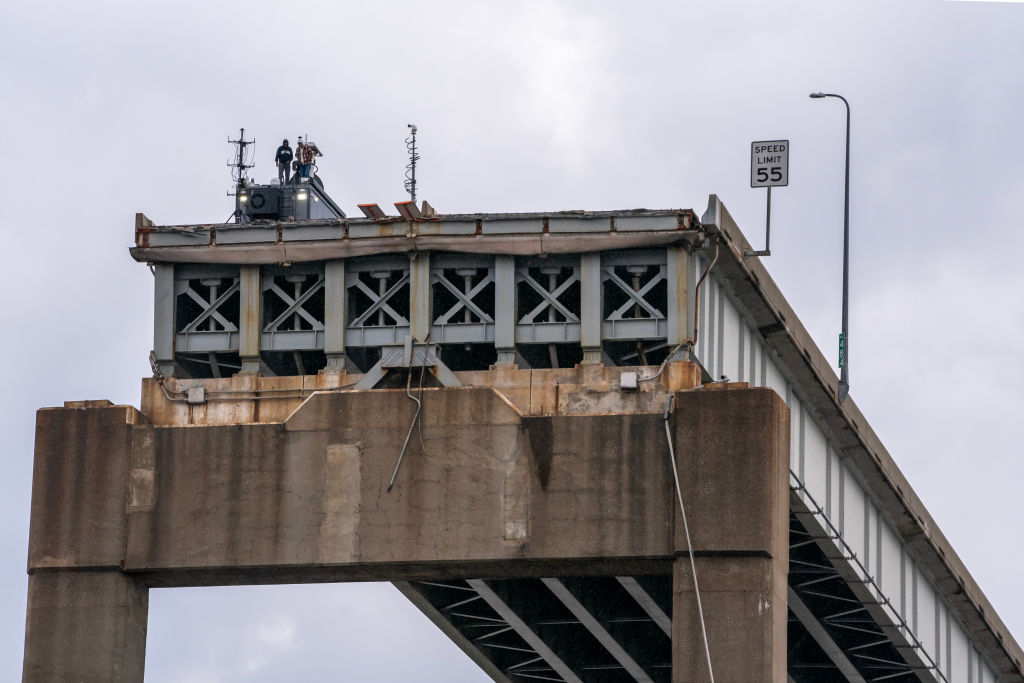
Workers on a portion of the collapsed Francis Scott Key Bridge in the Patapsco River after it was struck by the Dali container vessel in Baltimore, Maryland, US, on Thursday, April 4, 2024. Federal officials are poised to release preliminary findings of their investigation into the Baltimore bridge collapse that killed six and shut down Baltimore’s port last week. Photographer: Nathan Howard/Bloomberg via Getty Images

